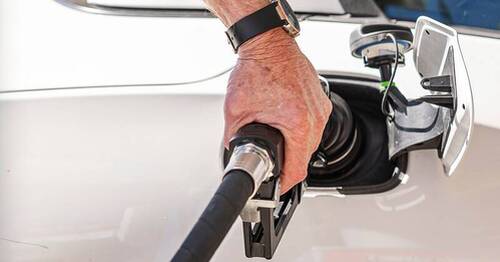
Higher gas prices: Where and why. Blame production cuts.
It was the longest losing streak for gasoline prices since the early months of the pandemic: For 98-consecutive days this summer, American drivers experienced declining gas prices thanks in part to a slower worldwide demand for oil.
Now, a cut in oil production signaled by the OPEC+ group last week has sent global crude prices higher, pushing prices back up at the pump.
According to AAA, the national average price of a gallon of gas climbed to $3.92 on Monday.
Prices are likely to keep going higher from here as oil prices climb, according to Patrick De Haan, chief petroleum analyst at the gas price tracking group GasBuddy.com.
“With OPEC+ deciding to cut oil production by two million barrels a day, we’ve seen oil prices surge 20%, which is the primary factor in the national average rising for the third straight week,” he said in a blog post Monday.
For the rest of the country, De Haan said he expects prices to rise as much as $0.30 from their September lows, which would put them at around $4 a gallon.
In a note to clients Monday, Andy Lipow, president of Lipow Oil Associates LLC consultancy, said he also expects gasoline prices to rise to as high as $4. Lipow also noted gasoline inventories have plummeted across much of the U.S. because the previously lower pump prices increased demand among drivers, which caused prices to climb.
The low inventories have prompted the Biden administration to consider banning exports of refined products out of the U.S., though no official announcement on that has been made yet. Analysts say such a ban would hurt European allies at a time when their energy prices are accelerating thanks to the war in Ukraine.
If there is any relief, it will be for drivers in the West Coast and in the Midwest. Refineries there have been offline in recent weeks, but are now set to resume operations. Once they do, prices there — now the highest in the country — are likely to come down, De Haan said.
Finding refuge at Costco
Consumers at warehouse buying clubs like Costco, too, may see more price stability.
On the company's second-quarter earnings call last month, Costco CFO Richard Galanti explained that the company's gasoline purchasing policy allows it to hold prices steady when costs go up at stations elsewhere.
Galanti said this is the case even if the company temporarily loses money, because it has more certainty with its members seeking out Costco gas compared to other stations that must buy gasoline in advance and charge a mark-up to boost their profits.
"When prices are going up each day, when spot prices are going up each day, it’s costing us a little more because we bought it today at the highest price versus four days ago," Galanti said.






